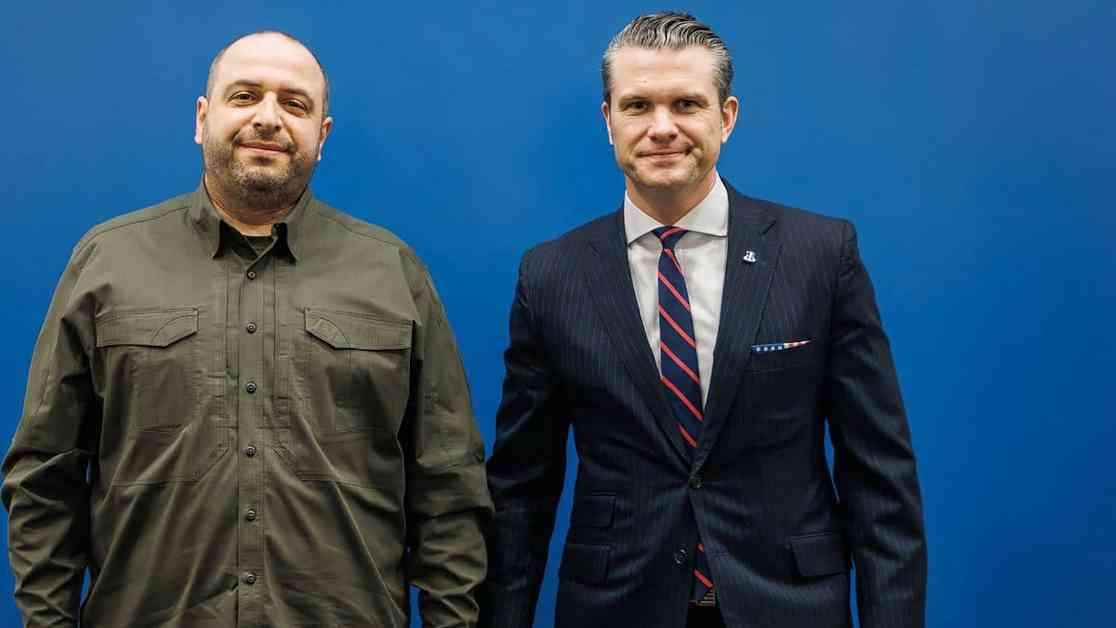Defense Secretary Pete Hegseth, in a recent meeting of the Ukraine Defense Contact Group, emphasized the need to prioritize ending the bloodshed and achieving lasting peace amid the ongoing conflict between Russia and Ukraine. Hegseth, representing the United States, outlined a pragmatic approach to resolving the crisis, acknowledging the complexities of the situation and advocating for a realistic assessment of the battlefield.
During the meeting, Hegseth reiterated President Donald Trump’s commitment to diplomacy as a means to bring both Russia and Ukraine to the negotiating table. While acknowledging Ukraine’s desire for full territorial liberation and NATO membership, Hegseth cautioned against pursuing unrealistic objectives that could prolong the conflict and lead to further suffering.
Challenges and Realistic Goals
Hegseth highlighted the strategic importance of balancing allied strength with practical goals, underscoring the need for a nuanced approach to resolving the conflict. He emphasized that while a sovereign and prosperous Ukraine is a shared objective, returning to pre-2014 borders may not be feasible in the immediate future. By advocating for a more measured approach, Hegseth urged allies to focus on achievable outcomes that prioritize stability and security.
The defense secretary’s remarks also touched on the role of energy policies in pressuring Russia to engage in negotiations. He emphasized the potential impact of lower energy prices and enhanced enforcement of sanctions in incentivizing Moscow to seek a peaceful resolution to the conflict. Hegseth’s emphasis on leveraging economic tools to influence Russian behavior underscored the multifaceted nature of diplomatic efforts in resolving complex geopolitical disputes.
Empowering Allies and Prioritizing Security
In addressing the European allies, Hegseth called for increased support for Ukraine through donations of ammunition and equipment, expansion of industrial capabilities, and greater defense spending. He underscored the importance of strategic investments in defense infrastructure and emphasized the need for allies to meet higher spending targets to enhance their security posture. By calling for a commitment to increasing defense spending beyond the agreed threshold of 2% of GDP, Hegseth signaled a shift towards a more proactive and self-reliant approach to security.
Furthermore, Hegseth stressed the need for a more balanced transatlantic relationship that empowers European nations to take greater responsibility for their own security. By advocating for a more equitable partnership that prioritizes self-sufficiency and strategic investments in defense capabilities, he signaled a departure from traditional models of dependency on the United States. Hegseth’s call for honesty and transparency in future engagements underscored a commitment to fostering a more sustainable and equitable alliance among NATO members.
In response to Hegseth’s address, British Defense Secretary John Healey expressed solidarity with the U.S. commitment to NATO, Article Five, and a sovereign Ukraine. He acknowledged the challenges posed by the conflict and reaffirmed Europe’s determination to stand united in the face of Russian aggression. Healey’s remarks echoed a sense of shared responsibility and collective resolve among allied nations to address the ongoing crisis and work towards a peaceful resolution.
As the Ukraine Defense Contact Group continues its deliberations and diplomatic efforts, the words of Defense Secretary Pete Hegseth serve as a reminder of the complexities and challenges inherent in resolving conflicts of this nature. By advocating for a pragmatic and realistic approach to achieving peace, Hegseth and his counterparts seek to navigate the intricate geopolitical landscape with a focus on stability, security, and shared objectives.


